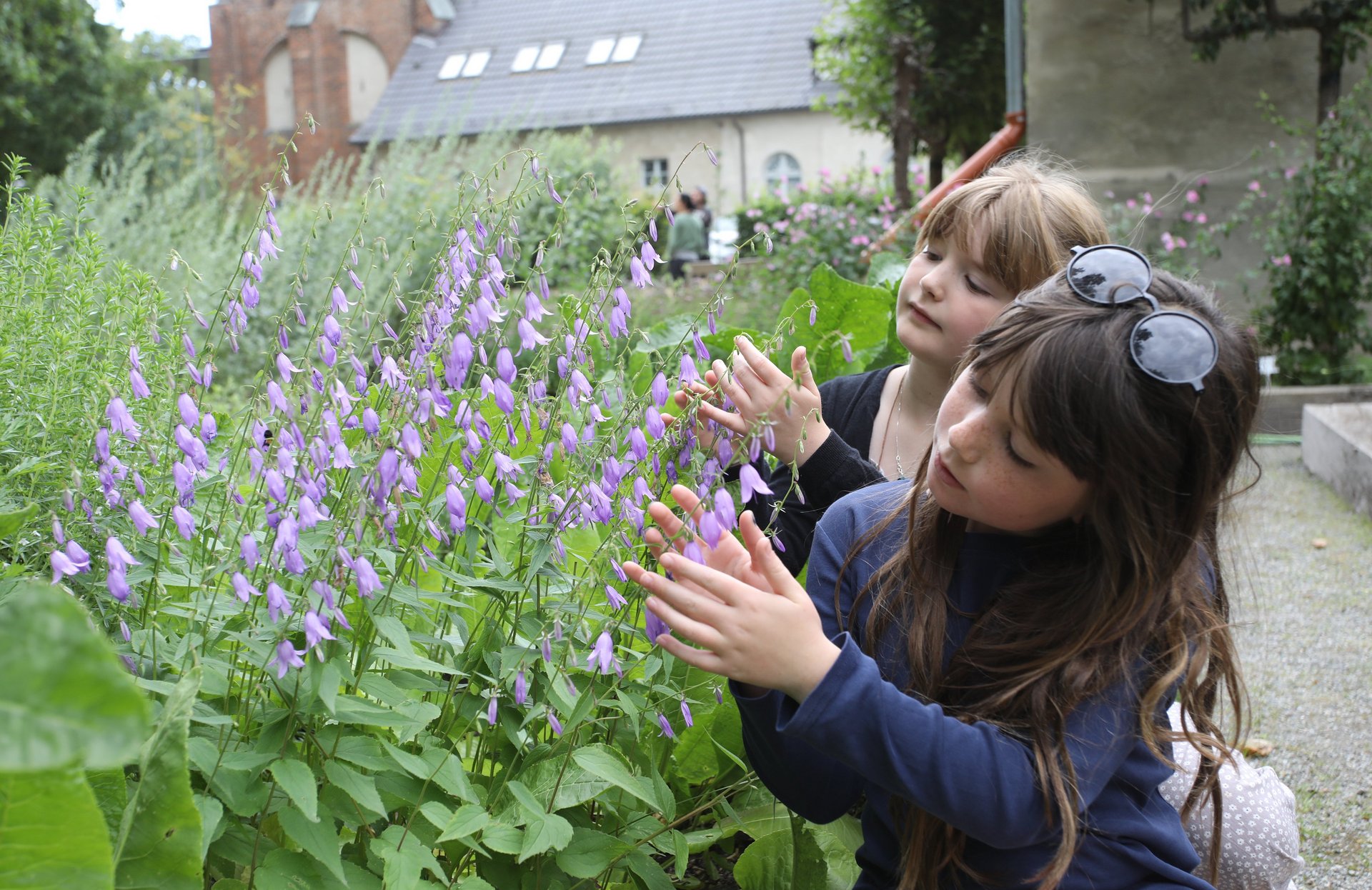Nature’s medicine cabinet, offering pleasure & edification – the Monastery Garden
Soon after the monastery was founded in 1262, the Greifswald Franciscans laid out a “cabbage garden” between the monastery’s library and the city wall; here, they grew their own vegetables. The area of today’s Museum Garden was donated to the Franciscans by Katharina Rubenow in 1491 as a “tree garden” for fruit trees.
Medieval monastery gardens were primarily kitchen gardens, but they also reflected the religious, medical, and aesthetic ideas of their period. Their characteristic layout was one of crisscrossing paths with a tree or fountain at their intersection. Raised beds stored water and heat, facilitated cultivation, and raised the blossoming and fragrant plants up closer to the eye and nose. Plants that supported each other in growth were cultivated in one bed – for example, carrots and onions. The garden was also a place for inner contemplation.
The Ice-Age travellers – Boulder Garden
Erratic boulders are legacies of the last Ice Age that arose between 115,000–15,000 years ago. Many of these large stones have smoothly polished sides or even parallel grooves, which testify to the immense forces of the mighty ice sheets and the vast transport time.
In the Boulder Garden on the south side of the Grey Monastery, some of these “ice travellers” are grouped in the position of their Scandinavian places of origin. But the heaviest boulder now lies beneath the vaulted ceiling of the museum. How did it get there?
Opening hours of the Boulder Garden
The Boulder Garden is located outside the museum and is accessible at all times.
Use our general map for orientation.
